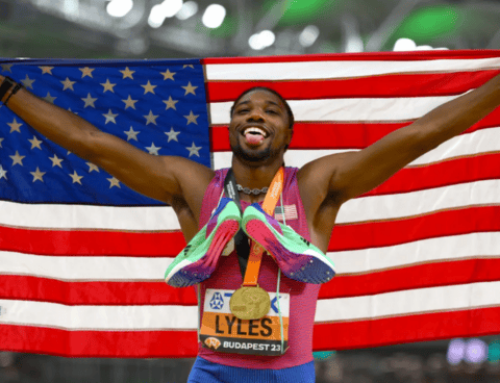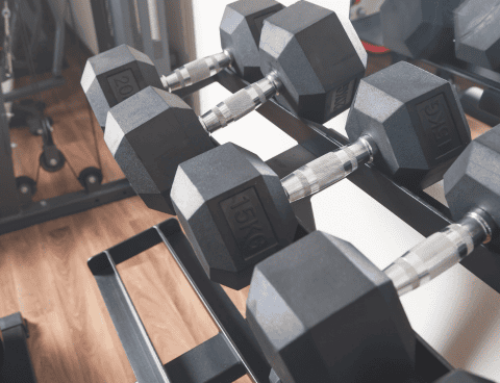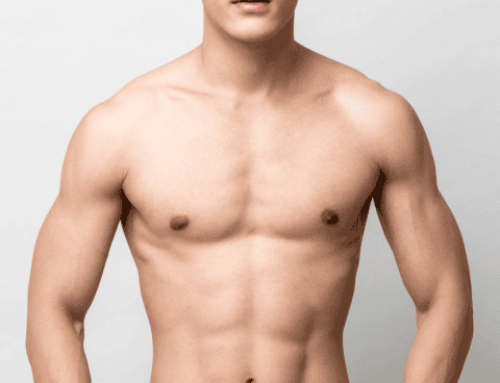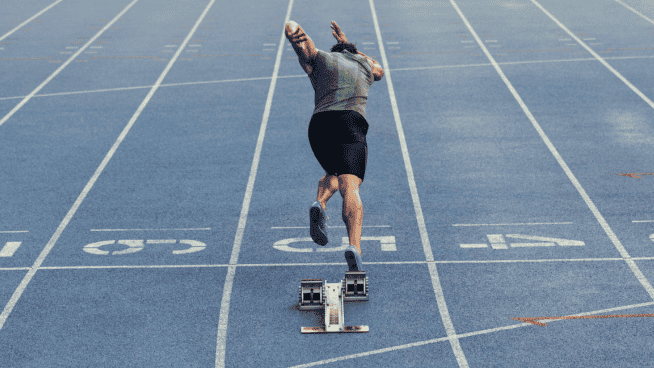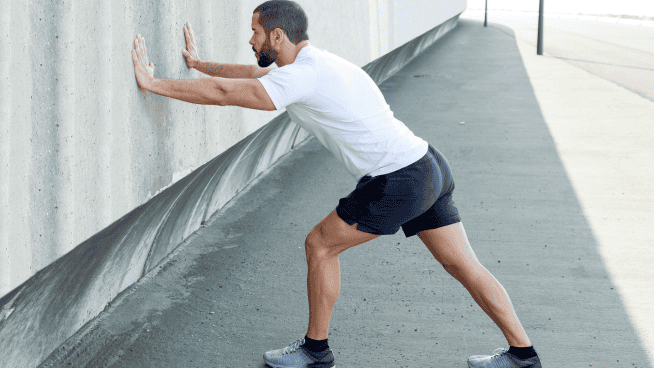5 Abilities That Will Make You Better at Any Sport
No two sports are exactly the same.
Some sports require a quick burst of energy; others require you to move continuously for minutes on end. Some sports require more strength, while others require frequent change of direction. The variety in demands between different sports is what makes each game so unique.
But despite all these little differences, there are some universal qualities that translate over to all sports. If you want to become a better athlete no matter what sport(s) you play, improving these five abilities will make it happen.
1. The Ability to Absorb Force
Sports are about producing and controlling force.
As a sprinter, you explode out of the blocks. As a basketball player, you quickly judge how much force to put into the ground to jump a certain height. As a linebacker, you hope to deliver enough force to make the tackle.
Focusing your training on producing and controlling force makes sense; it directly impacts how good you will be at a sport.
However, what if told you the ability to absorb force is arguably more important?
For some reason, being able to efficiently absorb force is often ignored when it comes to training for your sport.
Yet it’s a quality that often makes a huge difference in an athlete’s effectiveness in their sport. If Luka Doncic and James Harden weren’t so good at absorbing force, for example, they’d be far easier to contain.
What are the benefits of being better equipped to absorb force?
- Reduced risk of injury (injuries happen when a force is too great for the body to handle)
- Increased ability to stop quicker and cut harder
- Increased ability to produce more force (the more force you can absorb the more force you can put back out safely and efficiently)
There are many ways to enhance your ability to absorb force. Depth Landings are one good option. Perform 2-4 sets of 6-8 reps.
While simply getting stronger will greatly help your ability to absorb force, utilizing Tempo Work where you slow down the eccentric phase before performing an explosive concentric can be extra beneficial. This is a safe method to utilize for just about any big weight room lift.
2. The Ability to Hinge
Most sports require you to be in athletic positions and utilize your glutes to produce power. Mastering the hinge will strengthen your glutes and teach you to tap into the power of your posterior chain. If you can’t hinge, getting the big muscles on the backside of your body to work effectively will be very difficult.
The benefits of mastering your hinge will be a stronger posterior chain, greater power production, and an increased ability to transfer for between your lower and upper halves. If you can’t hinge, the effectiveness of your weight room training will likely be severely hamstrung.
There are many drills to help an athlete learn how to hinge, and improving the strength and stability of their hinge is a never-ending task. I’ve found the slow progression of a Kettlebell Deadlift to a Kettlebell Swing to be an excellent way to help athletes discover their hinge.
3. The Ability to Be Strong Overhead
A lot of people’s go-to for upper-body strength is the Bench Press.
Don’t get me wrong, I love a good Bench Press, but most athletes can benefit much more from the Overhead Press.
Now, I know what you’re thinking—what sports require you to press a heavy load directly over your head while standing on two feet?
Not many. But this is a case where dismissing something as not being “sport specific” enough is a big mistake.
Lifting overhead requires you to have good shoulder mobility and awareness. You also need control of your pelvis and rib position. To get strong overhead, you need to get better at creating force by pushing into the ground. The better your alignment, the safer you can do this while producing large amounts of force.
By increasing your overhead strength, you will see an increase in your overall upper-body strength. All of these things are of great benefit to many different types of athletes.
Again, there are many ways to get strong overhead. Two kettlebell moves I like for this are the Kettlebell One-Arm Overhead Press and the Kettlebell One-Arm Push Press.
4. The Ability to Be Strong on One Leg
There are very few moments during a sporting event when you are required to push off both feet at the same time. Sports happen one quick, single-leg stance at a time.
“You run on one leg. You generally jump off one leg. There’s very little bilateral exercise that goes on in most sports out there,” says Mike Boyle, co-founder of Mike Boyle Strength and Conditioning. “I always say the only sport where you really get bilateral exercise is rowing.”
You can never be too strong on one leg. Increased single-leg strength helps us create better stability and produce more force off one leg.
Two of my favorite movements for building single-leg strength are Rear Foot-Elevated Split Squats and an Elevated Single-Leg Squat.
5. The Ability to Create and Release Tension
Learning to create and release tension might be the single most important ability on this list.
Without tension, you aren’t stable enough to create large amounts of force. If you are too tense, however, you will not be able to move freely, resulting in decreased power output and fluidity.
This impacts so many important athletic qualities. Expressing speed is about getting many different muscles to contract and relax at exactly the right times and in the exact right proportions, for example.
Two of my favorite movements for helping athletes improve their ability to create and release tension at the right times are the Core-Engaged Dead Bug and the Turkish Get-Up.
Mastering these five abilities will improve both your performance in your sport(s) and the effectiveness of your training.
Photo Credit: Redshinestudio/iStock
READ MORE:
RECOMMENDED FOR YOU
5 Abilities That Will Make You Better at Any Sport
No two sports are exactly the same.
Some sports require a quick burst of energy; others require you to move continuously for minutes on end. Some sports require more strength, while others require frequent change of direction. The variety in demands between different sports is what makes each game so unique.
But despite all these little differences, there are some universal qualities that translate over to all sports. If you want to become a better athlete no matter what sport(s) you play, improving these five abilities will make it happen.
1. The Ability to Absorb Force
Sports are about producing and controlling force.
As a sprinter, you explode out of the blocks. As a basketball player, you quickly judge how much force to put into the ground to jump a certain height. As a linebacker, you hope to deliver enough force to make the tackle.
Focusing your training on producing and controlling force makes sense; it directly impacts how good you will be at a sport.
However, what if told you the ability to absorb force is arguably more important?
For some reason, being able to efficiently absorb force is often ignored when it comes to training for your sport.
Yet it’s a quality that often makes a huge difference in an athlete’s effectiveness in their sport. If Luka Doncic and James Harden weren’t so good at absorbing force, for example, they’d be far easier to contain.
What are the benefits of being better equipped to absorb force?
- Reduced risk of injury (injuries happen when a force is too great for the body to handle)
- Increased ability to stop quicker and cut harder
- Increased ability to produce more force (the more force you can absorb the more force you can put back out safely and efficiently)
There are many ways to enhance your ability to absorb force. Depth Landings are one good option. Perform 2-4 sets of 6-8 reps.
While simply getting stronger will greatly help your ability to absorb force, utilizing Tempo Work where you slow down the eccentric phase before performing an explosive concentric can be extra beneficial. This is a safe method to utilize for just about any big weight room lift.
2. The Ability to Hinge
Most sports require you to be in athletic positions and utilize your glutes to produce power. Mastering the hinge will strengthen your glutes and teach you to tap into the power of your posterior chain. If you can’t hinge, getting the big muscles on the backside of your body to work effectively will be very difficult.
The benefits of mastering your hinge will be a stronger posterior chain, greater power production, and an increased ability to transfer for between your lower and upper halves. If you can’t hinge, the effectiveness of your weight room training will likely be severely hamstrung.
There are many drills to help an athlete learn how to hinge, and improving the strength and stability of their hinge is a never-ending task. I’ve found the slow progression of a Kettlebell Deadlift to a Kettlebell Swing to be an excellent way to help athletes discover their hinge.
3. The Ability to Be Strong Overhead
A lot of people’s go-to for upper-body strength is the Bench Press.
Don’t get me wrong, I love a good Bench Press, but most athletes can benefit much more from the Overhead Press.
Now, I know what you’re thinking—what sports require you to press a heavy load directly over your head while standing on two feet?
Not many. But this is a case where dismissing something as not being “sport specific” enough is a big mistake.
Lifting overhead requires you to have good shoulder mobility and awareness. You also need control of your pelvis and rib position. To get strong overhead, you need to get better at creating force by pushing into the ground. The better your alignment, the safer you can do this while producing large amounts of force.
By increasing your overhead strength, you will see an increase in your overall upper-body strength. All of these things are of great benefit to many different types of athletes.
Again, there are many ways to get strong overhead. Two kettlebell moves I like for this are the Kettlebell One-Arm Overhead Press and the Kettlebell One-Arm Push Press.
4. The Ability to Be Strong on One Leg
There are very few moments during a sporting event when you are required to push off both feet at the same time. Sports happen one quick, single-leg stance at a time.
“You run on one leg. You generally jump off one leg. There’s very little bilateral exercise that goes on in most sports out there,” says Mike Boyle, co-founder of Mike Boyle Strength and Conditioning. “I always say the only sport where you really get bilateral exercise is rowing.”
You can never be too strong on one leg. Increased single-leg strength helps us create better stability and produce more force off one leg.
Two of my favorite movements for building single-leg strength are Rear Foot-Elevated Split Squats and an Elevated Single-Leg Squat.
5. The Ability to Create and Release Tension
Learning to create and release tension might be the single most important ability on this list.
Without tension, you aren’t stable enough to create large amounts of force. If you are too tense, however, you will not be able to move freely, resulting in decreased power output and fluidity.
This impacts so many important athletic qualities. Expressing speed is about getting many different muscles to contract and relax at exactly the right times and in the exact right proportions, for example.
Two of my favorite movements for helping athletes improve their ability to create and release tension at the right times are the Core-Engaged Dead Bug and the Turkish Get-Up.
Mastering these five abilities will improve both your performance in your sport(s) and the effectiveness of your training.
Photo Credit: Redshinestudio/iStock
READ MORE:

